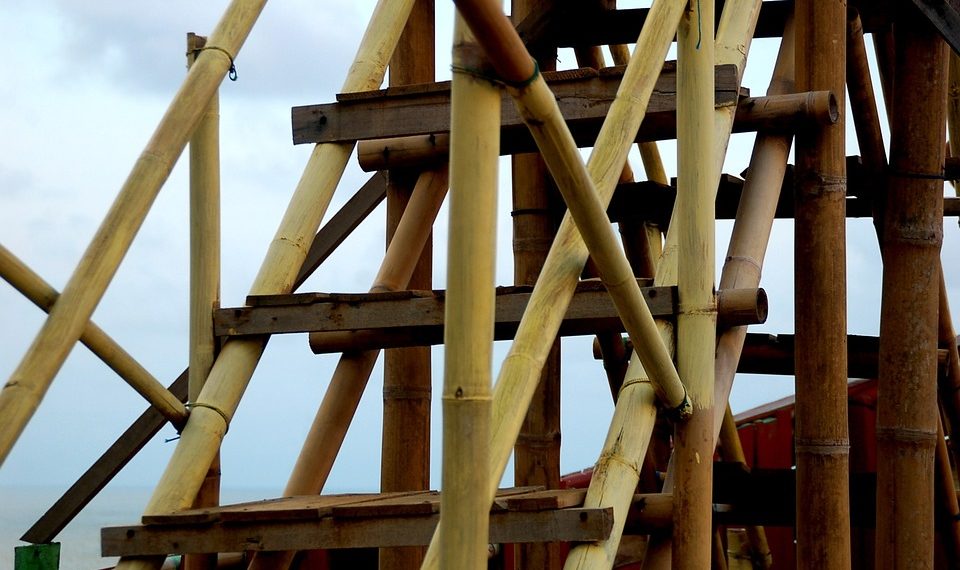Article in collaboration with RTS
The oldest buildings in the world have stood now for close to 7000 years. Sure, they might be a little draughty, the roof probably leaks and there’s no front door to speak of; but still, that’s a pretty impressive run. What’s more impressive however, is that these ancient buildings were, of course, constructed exclusively with natural materials found within their respective local areas—ensuring that they are both built to last and extremely eco-friendly.
In truth, our architectural obsessions with steel, concrete and plaster are a relatively new phenomena; and throughout much of history, people have turned to mother nature for inspiration when sheltering from the storm. However, as urban populations have grown, and architectural tastes have developed, we’ve steadily moved towards man-made materials and construction methods at the expense of some truly useful ancient technologies.
Natural materials generally offer superior thermal and sound insulation properties, they create no harmful chemicals or other waste during construction, they are durable (in some cases earthquake resistant), simple to build, and eco-friendly throughout the entire life of the building. In fact, for architects and self-builders working towards the low-impact Passiv Haus methodology or LEED certification, natural materials are the ideal choice.
Thankfully, the time-honored traditions of natural construction have not been completely lost, and some architects, construction workers, and self-builders are rediscovering the benefits of natural materials. Here, we take a look at just a few of the most popular methods and materials—who knows, maybe your next home will be a mud hut!
Adobe Construction
Adobe construction is the archetypal mud hut; and while the Spanish translation of the word means “mudbrick”, the term can be applied to any type of earth-based building. It is thought that Adobe is among the earliest construction materials ever used, however, it is not quite as durable as stone, and so there are fewer ancient examples still intact.
Adobe is essentially a sun-dried brick that’s quick to make and simple to build with. It offers excellent thermal properties and is popular across the world thanks to its low-tech approach and availability of raw materials, i.e. mud. However, if the idea of the mud-life isn’t quite glamorous enough for you, then perhaps reserve your judgment until you’ve seen the magnificence of The Great Mosque at Djenne.
Earthbag Construction
Earthbag construction is kind of like Adobe’s long-lost granddaughter—you know it’s made of the same stuff but it’s much prettier and has a few extra tricks up its sleeve. Its contemporary origins were popularized in 1991 by Nader Khalili, and as you might have already guessed, the process essentially involves filling bags with earth and using them as bricks.
Earthbag walls display the same thermal properties as adobe, however, thanks to a layer of barbed wire placed on each course, earthbag walls are known to be highly resistant to earthquakes. Additionally, earthbag constructions can be finished using modern plasters, meaning that they can be made to look as modern or contemporary as you like.
Bamboo Construction
Perhaps unsurprisingly, bamboo construction’s ancient origins are found in South Asia, East Asia and the South Pacific. Among its many amazing properties include a tensile strength that rivals steel; a higher compressive strength than wood, brick, and concrete; and the fact that it is among the fastest-growing plants in the world.
Bamboo construction takes on many forms, and it can either be used alone for an entire project or paired with more modern materials such as concrete. It is, however, extremely versatile, and today, some of the most spectacular buildings in the world are crafted from this amazing material.
Straw-Bale Construction
You’ve heard the one about the little pig who built his house out of straw? Well, that was just and old wives’ tale, and today, straw-bale constructions definitely won’t blow down for the first wolf who comes calling. Straw-bale construction can be implemented in two ways; either as packing within a frame, or as a monolithic building material in its own right. Both options offer amazing thermal properties and require little or no experience to get started.
Surprisingly, straw-bale construction is also naturally fire-retardant, offering up to three times the fire resistance of a normal house thanks to the fact that the straw bales are packed together so tightly. There are however, a couple of downsides to this material, and you’ll have to watch out for mice and rats who might also want to move into your new home as you are building.
Author bio
RTS is a B-Corp committed to building a more sustainable world. We are an innovative waste management service that connects businesses to haulers through cutting-edge technologies. We also work with the construction industry to efficiently divert waste from construction sites for recycling or disposal. We help companies work towards LEED certification through building lifecycle impact reduction and much more.





